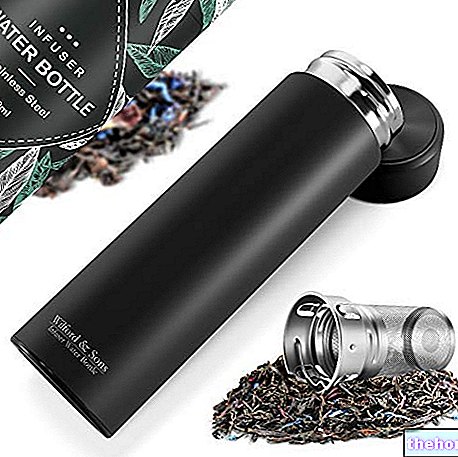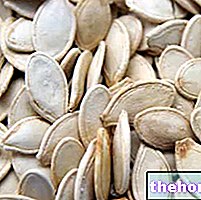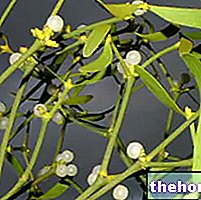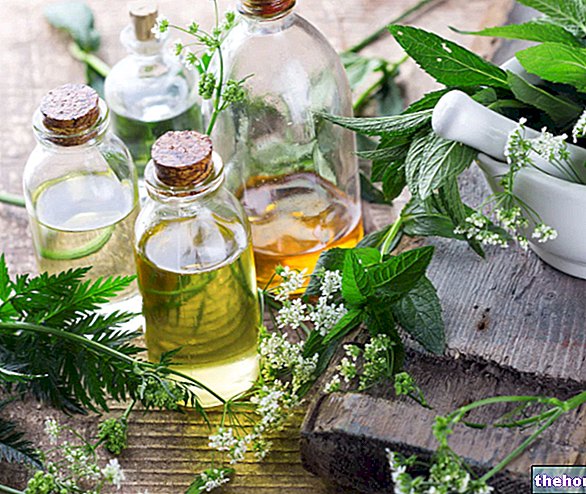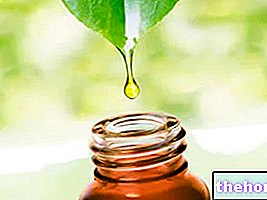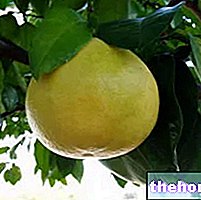Premise
The broom: how can we forget the poem that pays homage to the Poet of pessimism?
The broom, thanks to its marked resistance and ability to adapt in arid places, was the subject of extraordinary poetic works, a symbol of "stepmother nature" that hides the "eternal struggle of man against nature."
In this examination we will try to analyze the characteristics that distinguish the broom, also investigating its phytotherapeutic and homeopathic aspects.
General description

In symbolism, due to the arid and extremely drought places in which it grows, the broom is often associated with humility and modesty.
The term "broom" indicates a group of bushy plants which, with yellow flowers, decorate barren landscapes and at the same time emanate particularly intense perfumed fragrances in the surrounding environment.
Genera and species
Gorse are members of the Papilionaceae Leguminosae family: we are talking about typical shrubs of the Mediterranean area, which differ not only from one genus to another, but even from one species to another. In fact, the varieties of gorse are quite numerous (there are about 75 species); however, the reference model is indicated by gender Spartium, to which a "single species (S. junceum).
Among the most prominent genres, they are remembered Genista (in particular, gorse or Genista tinctoria), Ulex (mostly U. europaeus or gorse, one of the 38 Bach flowers) Cytisus (G. dei carbonai), Sarothamnus, Coronilla And Colutea.
Most of the species share a shrubby-bushy habit, very fragrant yellow flowers and leaves tending to fall prematurely which, in some cases, are completely absent. The branches, bare and sharp, have contributed to assigning the nickname "Christ's whip" to the broom.
Broom: Spartium junceum
We have seen how the reference model for gorse is without doubt Spartium junceum, a common shrub - typical of the southern regions of Italy - with flexible, naked, particularly branched and generally leafless branches. The sharp branches end with yellow inflorescences that certainly do not go unnoticed: the flowers show off a bright canary yellow dress , and release an intense fragrance in the air. [adapted from Archaeobotany: plant finds from Pompeii and the Vesuvian territory, by M. Borgongino]
The distinctive feature of this broom is the stem: since the plant is almost devoid of leaves, the chlorophyll function is reserved for the stem, erect and scopiform, very rich in chlorophyll.
Aphilia (lack of leaves) must be analyzed in a double interpretative key: if on the one hand, in a certain sense, the scarcity of leaves protects the plant from a possible excessive loss of water, on the other it could constitute a danger. As we know, the leaves are used for the chlorophyll function, therefore they can be compared to a sort of industrial plant, an area in which the nutrients essential for the development of the plant are collected and "processed": clearly, when this industry is lacking, the plant dies. Nature, however, has found a remedy: the chlorophyll function of the leaves is almost completely delegated to the stem, thus ensuring the correct development of the broom. Not surprisingly, the stem, instead of being brown - like most plants - takes on a greenish color, demonstrating its "new" photosynthetic function.
The seeds of this broom, as well as the whole plant, are poisonous due to the presence of cytisine (alkaloid), an even more toxic molecule than sparteine [taken from Reasoned dictionary of herbal medicine and phytotherapy, by A. Bruni, M. Nicoletti]
Broom of the charcoal burners
Self Spartium junceum is typical of the southern regions, Cytisus scoparius (broom of the charcoal burners) is common in the northern areas of the Bel Paese. More precisely, this broom grows in hilly and mountainous areas, and differs from the other species for the branches, longitudinally grooved, and for the leaves, consisting of groups of three leaflets in the lower part of the branches. Nevertheless, the leaves fall very early. Also in this variety, fragrant golden yellow flowers branch off from the axil of the leaves.
Essential oil
The essential oils obtained from flowers and leaves (when present) of the various species of broom differ in some molecules; however, the essence is generally made up of alkaloid molecules, flavonoids, saponins and biogenic amines.
The essential oil is obtained from the flowers by extraction with hexane and subsequent distillation: the so-called "concrete" is obtained from the extract, from which, in turn, a very pure finished product called "absolute" is obtained (following a "further distillation). The essential products obtained from the purification processes of broom extracts are used both in perfumery (to intensify the scent of some blends), and in the food sector, to enrich fruit jams.
It is estimated that to obtain 1 or 2 kilos of concrete, a ton of broom flowers is required, from which 0.5-1.2 kilos of absolute are subsequently obtained.
Depending on the species considered, the broom extract can consist of:
- Quinolizidine alkaloids, especially cytisine (in Spartium junceum), sparteina (in Cytisus scoparius and in gorse) and lupanine (in Cytisus scoparius)
- Biogenic amines (tyrosine, tyramine, dopamine, in Cytisus scoparius)
- Flavonoids (it is rich in them Spartium junceum): eg. luteolin (especially in gorse)
- Coloring substances (genistein), typical of gorse
- Tannic acid (especially in gorse)
- Ulexin (alkaloid that characterizes the phytocomplex of gorse)
Phytotherapeutic uses
There are many therapeutic activities ascribed to the broom. First of all, the plant is widely used for its sedative, laxative and vasoconstrictive properties, in particular the common broom.
Also note the antiarrhythmic virtue attributed to the broom of the charcoal burners: in particular, the sparteine is exploited in the medical field for its cardiotonic abilities, therefore able to exercise chronotropic and inotropic activities. The extract of the flowers of the broom of the charcoal burners is used in the homeopathic field to regulate renal activity.
With the exception of the semi-toxic ones - the other parts of the broom are exploited for their laxative and diuretic capacities (popular use); in a similar way, tradition teaches to use the whole plant (except for the seeds) to promote urinary secretion and alleviate rheumatic problems.
But that's not all: other species of broom (eg. Gorse) are assigned anti-inflammatory properties (for external use), spasmolytic (for internal use), tranquilizers (to promote falling asleep) and to treat disorders related to cardiac fatigue. .
The toxic seeds are used for their anti-helminthic properties; finally, the decoction of dried gorse flowers is recommended to alleviate liver disorders, coughs and asthma.
As mentioned above, the gorse is one of the Bach flowers, and is used in the treatment of "resignation". [taken from wikipedia]
Side effects
The side effects related to the use of broom extracts cannot be missing: first of all, given the lack of sufficient studies that guarantee the safety of the plant during pregnancy, its use is prohibited for pregnant women.
Due to the presence of tyramine which, as we have seen, abounds in the broom of charcoal burners, the extract of broom is not recommended in subjects suffering from hypertension, especially if they are taking MAOIs at the same time (MonoAminoOxidase inhibitor drugs).
At high doses, broom extract is blamed for vomiting and laxative effects.
Ginestra in brief »
Select plant Fir Acacia Acerola Sorrel Yarrow Yarrow Yarrow Aconito Adatoda Garlic Agnocasto Agrimonia Alchemilla Alkekengi Aloe Altea Witch Hazel Ammi or Visnaga Pineapple Andrographis Anemone Pulsatilla Angelica Anise Star Anise Japanese Star Anise Bitter Orange Bitter Areca Arnica Harpagophytum Arpagophyte Artemisia Asteragus Basil Asparagus Asparagus Peruvian Asparagus Asparagus Asparagus Hawthorn Boldo Borage Shepherd's Purse Boswellia Bucco Butea superba Cocoa Coffee Cajeput Calamus Calamus Marigold Camedrio Chamomile Roman Chamomile Camphor Cinnamon Ceylon Maidenhair Capuchin Artichoke Cardamom Cardiac Thistle Asian Thistle Carvi Cascara Cassia Catecu Catha Cabbage Celandine Chicory Centaurea Cinnamon Cypress Celandine Chives Cypress Coca Cola Colchico Combreto Condurango Comfrey Coriander Cranberry Barberry American Chrysanthemum Cumin Turmeric Damiana Digital Dioscorea Drosera Dulcamara Dunalilella Echinacea Eder a Ephedra Elenio Eleutherococcus Helichrysum Evening primrose Horsetail Alfalfa Erica Euphrasia Erisimo Escolzia Eucalyptus Farfara Farfaraccio Calabar bean Fenugreek Fennel Phytolacca Frangola Ash Fumaria Japanese Mushrooms Galega Ganoderma lucidum Garcinia Cambogia Mulberry Gentian Broom Ginkgo Ginkgo Guipana Guipana Gynestra Ginkgo Hibelia Gymnasium Hibiscus Guarulp St. John's Wort Horse Chestnut Ispaghul Hyssop Jaborandi Kava kava Konjac Laminaria Cherry Laurel Lavender Lemongrass Lespedeza Lovage Icelandic Lichen Lemon Flax Lippia Licorice Lobelia Hops Maca Marjoram Maize Mallow Manna Marrubio Marrubio d "water Matè Melaleuca Meliloto American Lemon balm Myrtle Myrama Walnut Nutmeg Walnut vomica Olive tree Meadowsweet Ononide Opuntia Oregano Orthosiphon Nettle Poppy Papaya Parietaria Feverfew Passiflora Chilli Perilla Periwinkle Phyllanthus Plantain Picrorhiza Pilosella Pino Pisci dia Podofillo Polygala Grapefruit Parsley Psyllium Pueraria mirifica Butcher's broom Pygeum Quassia Oak Rhubarb Ratania Rauwolfia currant Castor bean Rhodiola Rosehip Rosemary Rue Willow Sarsaparilla Sage Elderberry Sassafras Sedum Ergot Senna Serenoa Repens Soybean Solidago Tansy Taraxus Tamarind Tamarind Tamarind Tamarind Tamarindo Ursina Valerian Vanilla Mullein Verbena Veronica Viburnum Vinca Pansy Mistletoe Vine Withania Yohimbe Saffron Ginger Pumpkin Select disease Juvenile Acne Rosacea Tinnitus Tinnitus Aerophagia Tendon Affections Afonia Aphthae Algias Functional Halitosis Breastfeeding Allergy Anemia Anguish Anxiety Arteriosclerosis Asthrosis Asthrosis Arthritis Arthritis Men Sex Woman Blepharitis and Conjunctivitis Eye bags Bronchitis Gallstones Kidney stones Salivary stones Baldness Androgenetic Candida Fragile hair Caries Headache Cellulitis Motion sickness Cystitis C limaterio Cholecystopathy High cholesterol Ulcerative colitis Colonoscopy Contusions Hematoma Convalescence Couperose Depression Dermatitis Diaper dermatitis Diabetes Diarrhea Erectile dysfunction Dyslipidemia Dysmenorrhea Dyspepsia Disturbances of vision Hemorrhoids Epistaxis Herethism Heart disease Fever Fibromyalgia Gastro-intestinal disease Flatulence Hypertension Fibromyalgia Gastrointomnia Jaundice Laryngitis Renal lithiasis Toothache Sore throat Thinness Menopause Meteorism Mononucleosis Alzheimer's disease Crohn's disease Nausea Vomiting Obesity Dark circles Onychomycosis Osteoporosis Dry skin Periarthritis Piorea Low pressure Prostatitis Psoriasis Colds Breast fissures Anal fissures Gastro-nasal rhinitis Senescence Premenstrual Syndrome Sinusitis Quit smoking Overweight Fatty liver Constipation Stomatitis Stress Cough Triglycerides high Ulcer Burns Nails Brittle flashes Heat Warts Dizziness Properties herbal Tanning Abortive adaptogenic Aphrodisiac bittering analgesic anesthetic anorectics analgesic antacid anti-allergic anti-asthmatic Antibiotic catarrh Anticellulitiche anticonvulsant Antidiaforetiche antidiarrheal edematous anthelmintic antiemetic Antiemorroidarie antiphlogistic Antiidrotiche Antinevrotiche Antioxidants antipyretic antirheumatic antiscorbutic Antiseptic antispasmodic anti-uric Aperitive Flavoring Astringent Balsamic Bechiche Capillarotrope Cardiotonic Carminative Cathartic Caustics Healing Cholagogues Choleretic Dyes Decongestants Deodorants Purifying Diaphoretic Cleansers Disinfectants Detoxifiers Thirst quenching Diuretics Exciting Emetics Emmenagogues Emollients Hemostatic Energies Hepatoprotectors Expectorants Eupepticus Moisturisers Galactosensitizers lanti Hypertensive Hypnotic Hypoglycemic Hypotensive Irritants Laxatives Soothing Narcotic Nerves Nutrients Odontalgic Pectoral Purgative Revulsive Remineralizing Refreshing Rubefacient Scialagoghe Sedative Soporifugas Sneezing Stomachic Stomatics Narcotic Vascular Tightenitis

